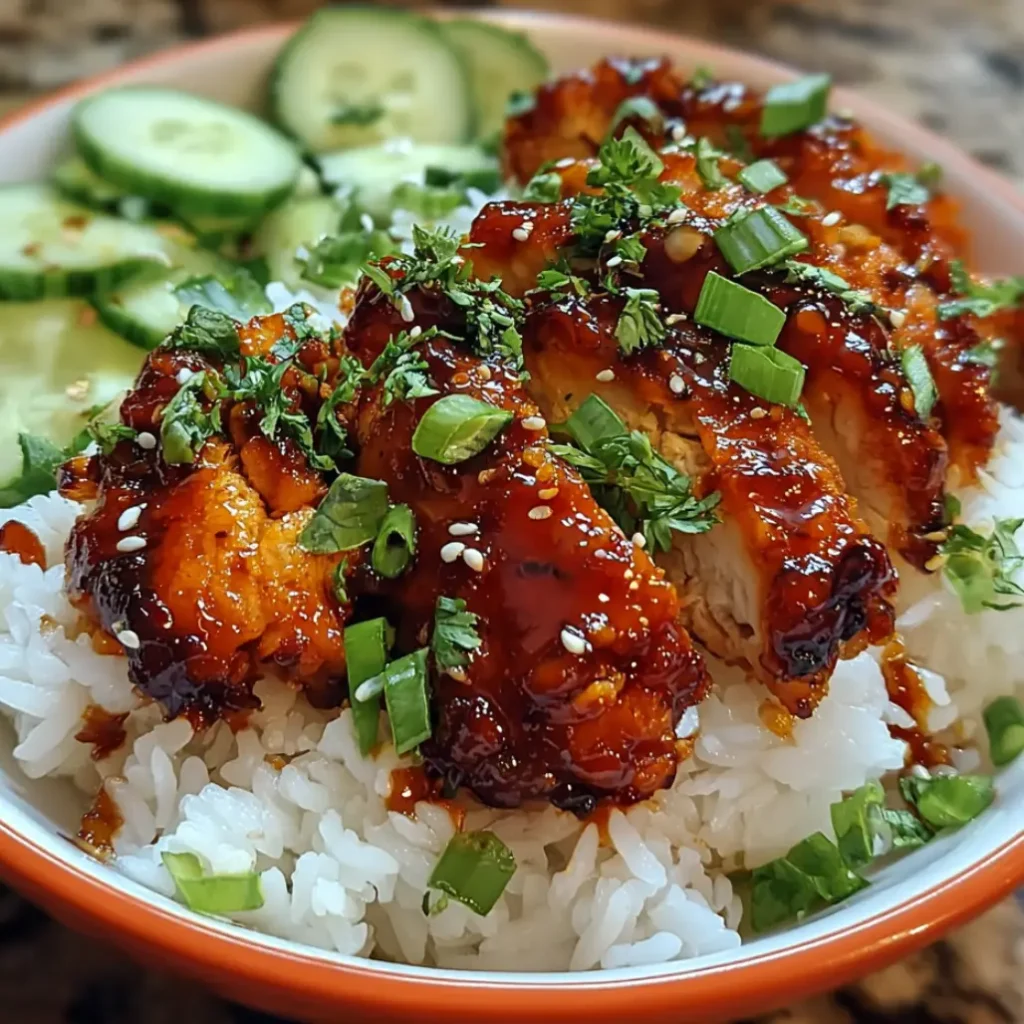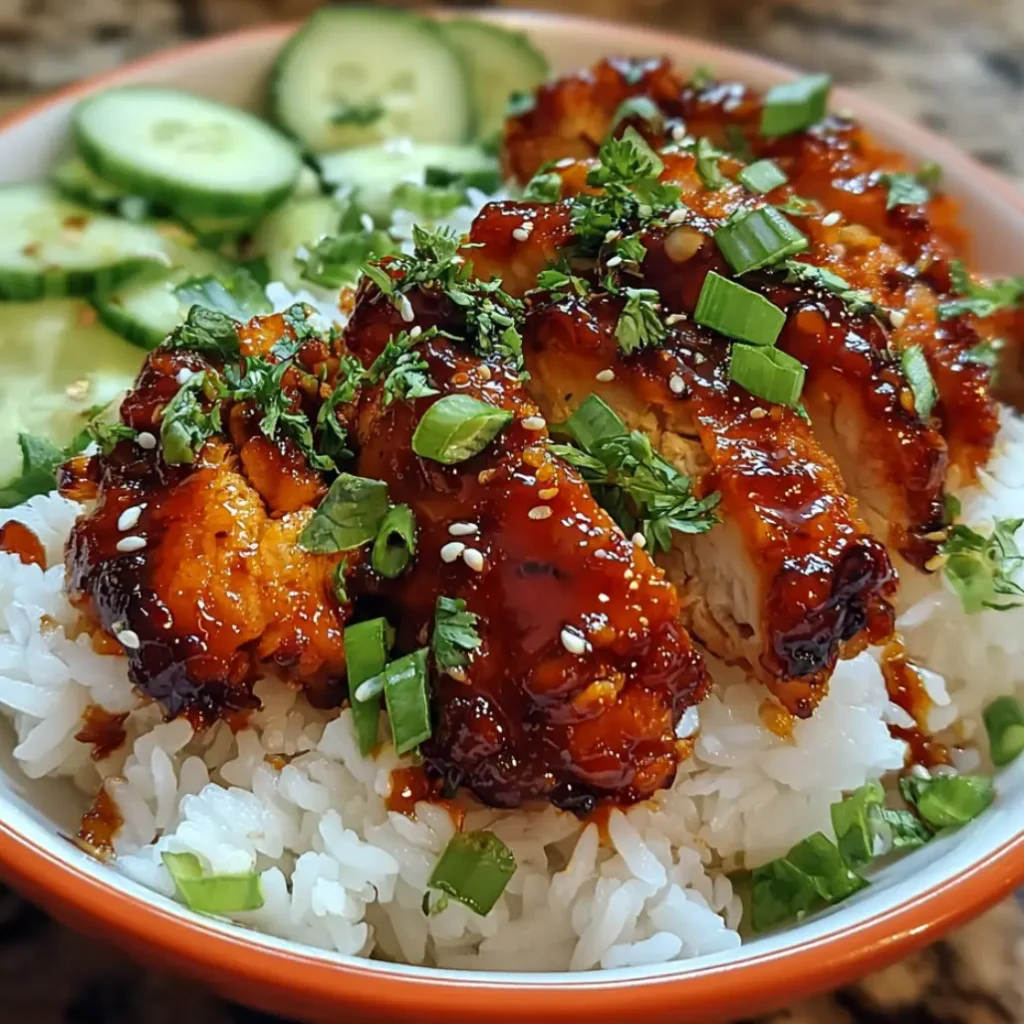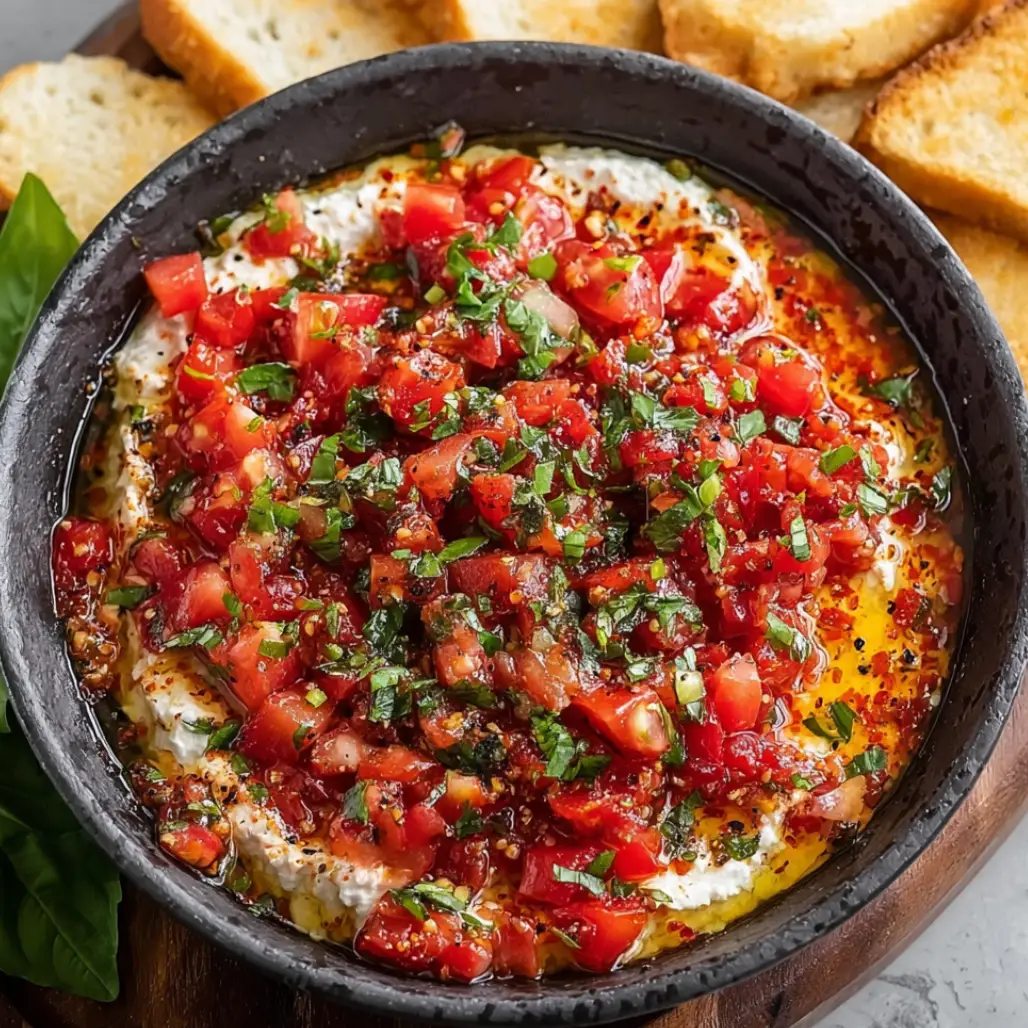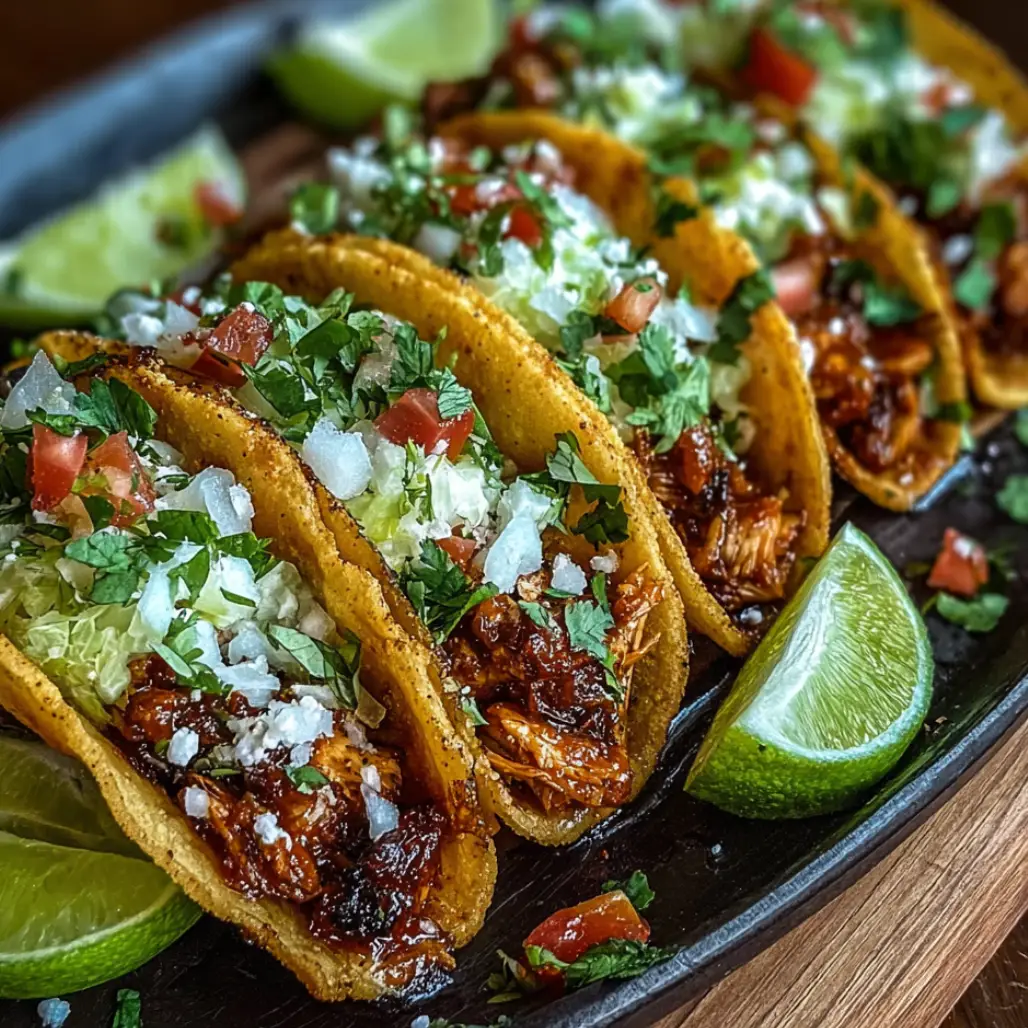| Prep Time: | 15 minutes |
|---|---|
| Cook Time: | 25 minutes |
| Total Time: | 40 minutes |
| Serves: | 4 |
Imagine biting into tender, juicy chicken coated in a gloriously sticky honey gochujang glaze that perfectly balances sweet honey with the complex heat of Korean fermented chili paste, because this extraordinary sticky honey gochujang chicken creates an unforgettable flavor experience that transforms ordinary weeknight dinners into restaurant-quality masterpieces. This sensational sticky honey gochujang chicken delivers the perfect harmony of sweet, spicy, and umami elements because it combines the natural sweetness of honey with the deep, fermented complexity of gochujang paste, creating a coating that caramelizes beautifully during cooking while infusing every bite with bold, authentic Korean flavors.
Why Sticky Honey Gochujang Chicken Creates Pure Magic
This incredible sticky honey gochujang chicken recipe works so brilliantly because it harnesses the unique properties of gochujang, a fermented Korean chili paste that provides not just heat but also deep umami richness and subtle sweetness that commercial hot sauces simply cannot replicate. The honey component serves multiple crucial functions because it balances the intensity of the gochujang while promoting beautiful caramelization that creates the signature sticky coating that makes this dish so visually appealing and irresistibly delicious.
The magic of this sticky honey gochujang chicken lies in its remarkable versatility because you can prepare it using various cooking methods including oven roasting, air frying, or pan-searing, each producing slightly different textures while maintaining the essential flavor profile that makes this dish so addictive. The marinade penetrates deep into the chicken because the acidic components in gochujang help break down proteins, ensuring that every bite delivers maximum flavor rather than just surface coating.
This sticky honey gochujang chicken preparation proves that authentic international flavors are accessible to home cooks because the ingredient list remains simple and straightforward while producing complex, sophisticated results that rival expensive Korean restaurants and demonstrate your culinary prowess to family and guests.
Essential Ingredients for Perfect Sticky Honey Gochujang Chicken
For the Chicken Base:
- 2 pounds boneless, skinless chicken thighs, cut into bite-sized pieces
- 1 teaspoon kosher salt
- 1/2 teaspoon black pepper
- 2 tablespoons cornstarch for coating
- 2 tablespoons vegetable oil for cooking
For the Sticky Gochujang Marinade:
- 3 tablespoons gochujang paste (Korean chili paste)
- 1/4 cup honey
- 2 tablespoons soy sauce (low sodium)
- 1 tablespoon rice vinegar
- 1 tablespoon sesame oil
- 4 cloves garlic, minced finely
- 1 teaspoon fresh ginger, grated
For the Finishing Glaze:
- 2 tablespoons additional honey
- 1 tablespoon additional gochujang paste
- 1 teaspoon sesame oil
For Garnish and Serving:
- 2 green onions, thinly sliced
- 1 tablespoon toasted sesame seeds
- Fresh cilantro leaves (optional)
- Lime wedges for serving
The Art of Creating Sticky Honey Gochujang Chicken
Mastering this exceptional sticky honey gochujang chicken requires understanding the delicate balance between marinade penetration and coating development because successful execution depends on proper timing that allows flavors to meld while creating the characteristic sticky exterior that defines this dish. The gochujang paste serves as the foundation because its fermented complexity provides depth that cannot be achieved through simple chili powder or hot sauce substitutions.
The honey selection proves crucial because different types create varying levels of sweetness and caramelization, with clover honey providing mild sweetness while wildflower varieties add floral notes that complement the earthy gochujang beautifully. Temperature control during cooking ensures that the sugars in the honey caramelize properly because excessive heat creates bitter notes while insufficient heat prevents the development of the signature sticky coating.
The chicken preparation method affects final texture significantly because proper sizing ensures even cooking while the cornstarch coating creates additional surface area for sauce adhesion, resulting in maximum flavor delivery and the crispy-tender contrast that makes this sticky honey gochujang chicken so irresistible.
Step-by-Step Instructions for Sticky Honey Gochujang Chicken
Step 1: Prepare the Chicken Foundation
Cut the chicken thighs into uniform bite-sized pieces, approximately 1-inch cubes because consistent sizing ensures even cooking and prevents some pieces from becoming overcooked while others remain underdone. Pat the chicken completely dry with paper towels because excess moisture interferes with marinade absorption and prevents proper browning during cooking.
Professional Tip: Use kitchen shears instead of a knife for cutting chicken thighs because they provide better control and create cleaner cuts through the meat and any remaining connective tissue.
Key Points: Season the chicken pieces with salt and pepper before adding other ingredients because this foundational seasoning enhances the meat’s natural flavor and helps the marinade penetrate more effectively.
Step 2: Create the Sticky Marinade Base
Combine gochujang paste, honey, soy sauce, rice vinegar, sesame oil, minced garlic, and grated ginger in a large mixing bowl because this order ensures proper incorporation while preventing the honey from clumping with other ingredients. Whisk vigorously until the mixture becomes smooth and homogeneous because proper blending ensures even flavor distribution throughout the chicken.
Professional Tip: Let the gochujang paste come to room temperature before mixing because cold paste doesn’t blend as easily and can create lumpy marinade that won’t coat evenly.
Key Points: Taste the marinade and adjust seasoning as needed because the final dish’s flavor depends entirely on this base, and it’s easier to balance sweetness and heat before adding the chicken.
Step 3: Marinate the Chicken Expertly
Add the seasoned chicken pieces to the marinade and toss thoroughly to ensure every surface is coated because uneven coverage results in inconsistent flavor throughout the finished dish. Cover the bowl with plastic wrap and refrigerate for at least 30 minutes because this minimum time allows initial flavor penetration, though overnight marination produces even better results.
Professional Tip: Massage the marinade into the chicken with clean hands because direct contact ensures better coverage than using utensils and helps work the flavors into the meat fibers.
Key Points: Remove the chicken from refrigerator 15 minutes before cooking because room temperature meat cooks more evenly and prevents temperature shock that can result in tough, rubbery texture.
Step 4: Prepare for Cooking Excellence
Preheat your oven to 425°F or air fryer to 400°F because proper preheating ensures immediate searing that locks in juices while beginning the caramelization process. Line a baking sheet with parchment paper or prepare your cooking surface because this prevents sticking and makes cleanup significantly easier.
Professional Tip: Toss the marinated chicken with cornstarch just before cooking because this creates additional texture and helps the glaze adhere better during the final coating stage.
Key Points: Reserve any excess marinade for basting during cooking because these flavorful juices can be reduced into an intensely flavored glaze that enhances the final presentation.
Step 5: Execute the Cooking Process
Arrange the chicken pieces in a single layer with space between each piece because overcrowding creates steam that prevents proper browning and caramelization. Cook for 20-25 minutes, flipping halfway through because this ensures even browning on all surfaces while preventing the marinade from burning.
Professional Tip: Brush the chicken with reserved marinade during the last 5 minutes of cooking because this creates additional glaze layers while the high heat caramelizes the sugars perfectly.
Key Points: Check internal temperature with a meat thermometer because chicken must reach 165°F for food safety, and overcooked chicken becomes dry despite the flavorful coating.
Step 6: Apply the Finishing Glaze
Combine the additional honey, gochujang, and sesame oil to create a finishing glaze because this final layer adds extra shine and intensifies the sticky coating that makes this dish so visually appealing. Brush or toss the cooked chicken with this glaze because the residual heat helps it adhere while creating the characteristic sticky texture.
Professional Tip: Apply the finishing glaze while the chicken is still hot because warm surfaces accept the coating better and the residual heat helps set the glaze without additional cooking.
Key Points: Garnish immediately with sliced green onions and sesame seeds because these fresh elements provide color contrast and textural interest that enhance both presentation and flavor complexity.
Professional Tips for Perfect Sticky Honey Gochujang Chicken
Gochujang quality varies significantly between brands because authentic Korean versions provide superior depth and complexity compared to American-made alternatives, so invest in products from reputable Korean food companies for the most authentic flavor experience. Store opened gochujang in the refrigerator because fermented products continue developing flavors and can become too intense if left at room temperature for extended periods.
Chicken thigh selection proves crucial because dark meat remains juicy and tender under high heat while breast meat can become dry and tough when subjected to the extended cooking times needed for proper caramelization. Choose thighs with minimal visible fat because excessive fat creates flare-ups during cooking that can burn the delicate glaze.
Timing coordination ensures success because this sticky honey gochujang chicken tastes best when served immediately while the glaze remains warm and glossy, so prepare any side dishes in advance to avoid delays that compromise the optimal eating experience.
Creative Variations for Sticky Honey Gochujang Chicken
Transform this basic sticky honey gochujang chicken into exciting alternatives because customization allows you to accommodate different dietary preferences and flavor profiles while maintaining the essential Korean character. Substitute chicken wings for thighs because wings provide more surface area for the sticky coating while creating finger-food perfect for parties and casual gatherings.
Experiment with additional aromatics because fresh ginger, lemongrass, or star anise can be added to the marinade for unique flavor profiles that complement the base gochujang and honey combination. Consider protein alternatives because firm tofu, pork shoulder, or even salmon fillets work beautifully with this preparation method and marinade combination.
Spice level adjustments accommodate various heat preferences because additional gochujang creates more intensity while honey additions tone down the heat for sensitive palates. For those following gluten-free diets, ensure your gochujang brand contains no wheat because some commercial varieties include wheat-based thickeners that compromise dietary restrictions.
Perfect Pairing Ideas for Sticky Honey Gochujang Chicken
This bold sticky honey gochujang chicken pairs beautifully with mild, cooling accompaniments that balance the intense flavors while providing textural contrast to the sticky coating. Consider fresh salads from https://tastymiddles.com/category/salads/ because crisp vegetables and light dressings cleanse the palate between bites of the rich, flavorful chicken.
Start your meal with light appetizers from https://tastymiddles.com/category/snacks-appetizers/ because simple preparations allow the main dish to remain the star while providing variety and visual interest throughout the dining experience. Complement the meal with thoughtful sides from https://tastymiddles.com/category/perfect-sides/ because properly chosen vegetables maintain the Asian flavor theme while adding nutritional balance.
Rice serves as the perfect foundation because its neutral flavor absorbs the delicious sauce while providing substance that makes the meal more filling and satisfying. Steamed jasmine rice works particularly well because its fragrant character complements the Korean flavors without competing for attention.
Discover More Korean-Inspired Cooking
Expand your Korean cooking repertoire with complementary recipes that share similar flavor profiles because building a collection of related dishes enhances your confidence and creates cohesive menu planning opportunities. Explore savory sides at https://solushrecipes.com/category/savory-sides/ because vegetables prepared with similar seasonings create harmonious flavor connections throughout your meal.
Enhance your culinary skills with marinades from https://solushrecipes.com/category/flavored-dips-marinades/ because these versatile preparations can transform simple proteins into complex dishes that complement your sticky honey gochujang chicken perfectly. Consider refreshing beverages from https://solushrecipes.com/category/refreshing-beverages/ because Korean-inspired drinks balance rich, spicy foods while enhancing the overall dining experience.
Complete your menu planning with breakfast favorites from https://solushrecipes.com/category/breakfast-favorites/ because incorporating Korean flavors into morning meals creates interesting culinary themes that showcase your developing skills and adventurous palate.
Storage Guidelines for Sticky Honey Gochujang Chicken
Proper storage techniques preserve both flavor and texture because leftover sticky honey gochujang chicken can provide delicious meals for up to four days when handled correctly. Cool completely before refrigerating because hot food raises refrigerator temperature and creates condensation that can make the coating soggy and compromise food safety.
Store in airtight containers to prevent moisture loss and flavor absorption because exposure to air causes the sticky coating to harden while picking up unwanted refrigerator odors that diminish the eating experience. The flavors actually improve during storage because the gochujang continues to develop complexity while the other ingredients meld together more completely.
Reheat carefully to preserve the sticky coating because gentle oven warming at 350°F restores the original texture better than microwave heating, which can create uneven hot spots and rubbery chicken. Brush with additional glaze during reheating because this refreshes the coating and restores the glossy appearance that makes this dish so visually appealing.
The Science Behind Perfect Sticky Honey Gochujang Chicken
Understanding the cooking process improves results because knowledge of how heat affects different ingredients helps predict outcomes and troubleshoot problems before they occur. The Maillard reaction between proteins and sugars creates the complex flavors and appealing brown color because this chemical process develops the characteristic taste profile of properly prepared sticky honey gochujang chicken.
Gochujang fermentation produces unique compounds because beneficial bacteria create complex flavor molecules that cannot be replicated through simple chili and sugar combinations, which explains why authentic Korean chili paste produces superior results compared to substitutions. The honey caramelization occurs at specific temperatures because understanding these thresholds helps achieve perfect coating consistency.
Marinade acid content affects protein structure because the fermented components in gochujang help break down tough muscle fibers while the enzymatic action tenderizes the meat naturally, resulting in the exceptionally tender texture that characterizes well-prepared sticky honey gochujang chicken.
Troubleshooting Common Sticky Honey Gochujang Chicken Issues
Burnt coating occurs when oven temperature is too high because the sugars in honey caramelize quickly and can turn bitter if subjected to excessive heat for extended periods. Monitor closely during the final cooking stages because the line between perfectly caramelized and burnt is very narrow.
Uneven coating distribution happens when chicken pieces are too wet or the marinade is too thin because excess moisture prevents proper adhesion while thin marinades run off instead of clinging to the meat surfaces. Pat chicken dry and allow marinade to reach proper consistency because these steps ensure maximum flavor delivery.
Tough, dry chicken results from overcooking because even the best marinade cannot rescue meat that has been subjected to excessive heat for too long. Use a meat thermometer and remove chicken immediately when it reaches 165°F because carryover cooking will complete the process while preserving juiciness.
Additional Korean Recipe Inspirations
Continue your culinary exploration with dessert options from https://tastymiddles.com/category/dessert-recipes/ because Korean-inspired sweets provide perfect endings to spicy meals like this sticky honey gochujang chicken. Consider fruit-based preparations or light textures because these choices balance the rich main course while maintaining thematic consistency.
Build confidence with similar glazing techniques because mastering the basic principles of sauce reduction and caramelization enables countless variations that showcase seasonal ingredients and personal preferences. Korean cooking emphasizes balance and harmony because these principles create satisfying meals that nourish both body and spirit.
Remember that cooking skills improve with practice because each attempt provides valuable learning experiences that enhance your understanding of ingredient interactions, timing, and flavor development that make home cooking truly rewarding and personally fulfilling.
Conclusion
This exceptional sticky honey gochujang chicken represents the perfect fusion of Korean authenticity and home cooking accessibility because it transforms simple ingredients into a sophisticated dish that rivals expensive restaurant preparations while remaining approachable for cooks of all skill levels. The combination of sweet honey and complex gochujang creates a harmony that satisfies both comfort food cravings and culinary adventure seeking.
Whether preparing impressive dinner party centerpieces or seeking weeknight meals that excite rather than bore, this sticky honey gochujang chicken delivers outstanding results because it requires minimal specialized equipment while providing maximum flavor impact and visual appeal. The recipe’s adaptability allows for endless customization because ingredient substitutions and cooking method variations accommodate dietary preferences and equipment limitations without compromising the essential characteristics that make this dish truly memorable and absolutely irresistible.









